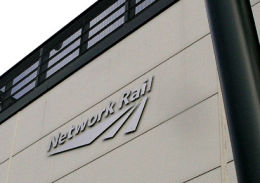Posted 9th December 2013 | 4 Comments
Network Rail debt is set to come in from the cold

NETWORK RAIL's debts of more than £30 billion could soon come out into the open, and be included as part of national borrowing for the first time.
The Office of National Statistics has warned that changes in European statistical guidance could prompt the move. Since 2001 Network Rail's borrowings have not been included in Public Sector Net Borrowing, on the grounds that Network Rail is technically a standalone limited company, although it has 'members' rather than shareholders.
But the Government has promised that the change, if it happens, will not affect Network Rail's planned spending of some £38 billion in the next five-year Control Period, which starts in April. Almost a third of that total is due to be invested in enhancing the network, particularly the electrification of more than 1,000 route kilometres.
The potential reform of Network Rail's debt is outlined on page 30 of the Chancellor's Autumn Statement, which was published last week. It says: "The government will implement any decision by the ONS promptly in its reporting arrangements in line with its commitment to transparency. A decision on the classification of Network Rail would not change the industry structure or affect the day-to-day operations of the rail network."
The change would increase Public Sector Net Debt by 2 per cent of gross domestic product, and Public Sector Net Borrowing by about 0.2 per cent of GDP.
Network Rail is shrugging off the implications. The company said: “Since Network Rail’s creation and the original decision by ONS to classify it as a private sector company, ONS has regularly reviewed Network Rail’s status. This is routine business, with Network Rail one of a number of bodies currently under review.
“Following record levels of investment by this Government, Network Rail is responsible for delivering a £38bn package of improvements on our railways. This review will not affect these investment plans.”
Another organisation whose debts are likely to be reclassified is the Royal Mail Pension Fund, and this would add to the country's official liabilities by some £67 billion -- more than twice as much as Network Rail.
Reader Comments:
Views expressed in submitted comments are that of the author, and not necessarily shared by Railnews.

Melvyn Windebank, Canvey Island, Essex
Given the way Network Rail was set up with a system to use any profits to invest in the network then one wonders how they would actually pay off debts unless we had a perfectly up to date nail network !
This decision begs the question as to how the Highways Agency debts are treated and whether they will be on an equal basis as Network Rail and just as visible ?
Tony Pearce, Reading
Lets say HS2 is £28 billion and is spread over a number of years. It will still be borrowing and will still be added to Governments total borrowing. Even if income is coming in on HS2, I doubt if anyone expects it to cover running costs for the first few years at least. I personally doubt income will even cover running costs (eg French TGV needs around £500 million a year subsidy). This is not meant to be a HS2 rant. But the point is its Government Debt and therefore a target for reduction should (when ?) the economy hits a sticky patch again. To reduce Network Rail debt probably means higher fares, or less investment. Speaking as a British Airways shareholder, the best thing that happened to BA was privatisation so that were freely able to borrow money to finance new planes, and not be subject to Government restrictions. And that was the point of Railtrack, not the 'nationalised' Network Rail.
Tony Pearce, Reading
But what happens when the £50 billion borrowing for HS2 is included in the figures ? Back in the bad old days, when Governments had to reduce their borrowing they always went for the Railways and British Airways. Schools and Health were left relatively unscathed. This may mean that Network Rails borrowing opportunities are reduced.
(Maybe. But the £50 billion you [and others] often quote includes £14.4bn contingency and £7.5bn or so for new trains [which without HS2 would have to be bought/leased for conventional intercity lines eventually, post-IEP]. So the base capital cost is more like £28bn, which would be spent over two decades -- in other words, an average of £1.4bn a year. Before even that is all gone, revenue would be coming in from passengers on Phase 1, to say nothing of compensating revenue from taxes which would be payable throughout the construction period.--Editor.]
Lutz, London
This is driven by decisions made in the EU aimed at those that have a tendency to hide debt off the national fugues. Although the debt is now to be recorded against the national fugues, it is still a Network Rail liability a would form part of the future asset sale.
(What future asset sale? One Railtrack was quite enough!--Editor.)